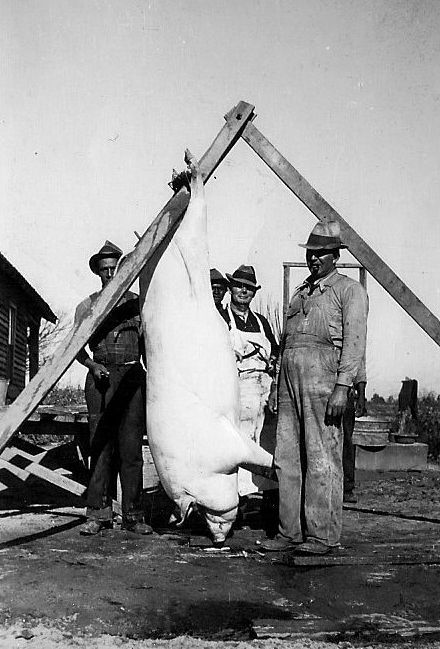The ol' Bloviator is fond of saying that politics is the ultimate spectator sport, and increasingly it seems that the chief participants are indistinguishable from the likes of Britney, Lindsay, and Charlie who fuel our national pop culture obsession. The last ten days or so present multiple cases in point, not the least of them being old Newt, whose announcement that his presidential candidacy is for real came almost simultaneously with the Donald's announcement that his isn't. This is really too bad because the thought of those two mixing it up out on the hustings would force the OB to make some tough decisions with the remote control, given the "Real Housewives" trilogy currently making heavy demands on his DVR's attention.
I can see it now, every time the Trumpster dropped an "F bomb," Newt would feel himself obligated to reclaim the headlines with yet another outrageous utterance. Before long, he would have repudiated Ronald Reagan entirely and insisted that everybody go back and read Chairman Mao a little more closely. Newt is obviously a person of intelligence, and the initial impression usually is that he gets the better of most exchanges with questioners and critics because he is so quick with the quip and come back. Going back over the transcript, however, one often realizes that what he has actually said is incompatible either with simple reality or with positions he has taken previously. Hence, the first take on his recent exchange with David Gregory on "Meet the Press" was that he had reamed old David out pretty good. However, when it began to sink in that what Newt had actually said amounted to a repudiation of Republican-right golden boy Paul Ryan's plan to effectively privatize Medicare, the collective knickers of the GOP right wadded up tighter than Joan Rivers's cheekbones, and Newt was reduced to issuing a stammering nonsensical disclaimer in which he wound up saying that anyone who said he said what he said before millions of television viewers was a liar.
Newt's greatest flaw as a politician is that he loves to be quoted too much. He simply can't stand the thought of going through an entire interview or public appearance without saying something memorable as opposed to simply conveying a very general impression without rendering himself strictly accountable by stating his position in just so many words. He's also so combative that he leads with his chin in the almost desperate hope that someone will take a swing at it. Hence, he made it a point when he announced his official candidacy to place wifey #3 (whose company he was keeping before wifey #2 was out of the picture) out front as a very visible figure in his campaign. Never mind that Calista Gingrich is clearly about as comfortable in that role as a prostitute in the presence of the Pope.
Speaking of that, now we finally know why so many Roman Catholic priests have been involved in child molestation episodes, and we also understand that, strictly speaking, they really aren't at fault. According to a new report commissioned by a group of Roman Catholic bishops in the U.S., "the abuse occurred because priests who were poorly prepared and monitored, and were under stress landed amid the social and sexual turmoil of the 1960s and '70s." Ah, the ol' "blame-it-on-Woodstock defense." The OB didn't quite make it to Woodstock, but he did watch the movie, and he has to say that he didn't see anything in it or about it that made him think it might be even remotely OK to stick his hands down a little boy's britches. As he understood it, "free love" applied to consenting adults, although "free sex" would have been a more apt term.
Former California Gov.
Arnold Schwarzenegger clearly had no problem with the latter designation, as we
were reminded last week when he announced that, while in office, he had
fathered a child out of wedlock with a member of his household staff. This
revelation came shortly after word that he and his wife Maria Shriver were on
that fast train to Splitsville. (Actually, poor Maria had to de-train briefly
in order to make the jilted celebrity wife's requisite appearance on "Oprah.") While you can't help but feel
sorry for Ms. Shriver, who stood by her Incredibly Horny Hulk during his first
campaign when he drew all sorts of charges of groping, fondling, tweaking and
other forms of inappropriate behavior toward women. On the other hand, as a
rather detailed biographical exposé from Gawker
makes clear, it ain't exactly as if she could have been unaware of the
Terminator/ Sperminator's history of hi-jinks with women, reportedly including
a sixteen-year old. (Though a Californian, Arnie apparently failed to pick up
on the meaning of "San Quentin Quail.")

(The image above was stolen from www.rotten.com.)
There was also widely circulated evidence of the Gov.'s stint as a gay porn model -Don't look Ethel! - though rumors of his dalliances with mustangs and chipmunks have yet to be substantiated. Unlike Newt, whose lust and patriotism seemed to ebb and flow in tandem, it was former Nazis like Kurt Waldheim who got it done for Arnie.
Not to be outdone by a towering, muscle-bound Teuton, France's Dominique Strauss-Kahn, the head of the International Monetary Fund, got himself accused of sodomizing and attempting to rape a New York hotel maid this week. Although the thrice-wed Monsieur Strauss-Kahn has a reputation as a serial seducer, in some French circles, or at least in some French male circles, this is more a badge of honor than a rap against him. Strauss-Kahn's legal wizards are poised to argue that the sex was "consensual," which, of course, happens every day between saggy sixty-two year old men and women half their age. Reportedly, five in ten Frenchmen believe their countryman was entrapped by political opponents in this case. Even if this is true, the history of the accused surely simplified the matter of choosing the bait.
Strauss-Kahn's guilt or innocence is irrelevant, of course, to the thousands of folks who believe this nor anything else will matter after May 21, which they have identified beyond a shadow of doubt as the date of "The Rapture," when all true believers will be plucked from their pickups, riding mowers, Harleys, etc. and "rise to meet their Savior in the air," as the Louvin Brothers might sing it.. The undeserving "everybody else's," doubtless including the OB and probably a lot of you, will be left behind to suffer all manner of torment when the official end of the world arrives on October 21. By the time most of you read this, we'll know whether the first part of this prediction was borne out, but in any event, just to be on the safe side, the OB intends to really make the most of the first few football games this season, just in case. Beyond that, though, he really wonders whether he would even want to be a part of this Rapture business. The New York Times offers this story of a family where the parents are so certain of what's going to happen on May 21 that they've stopped working or worrying about saving for their kids' college educations. There are also tales of folks who have run up enormous debts, which, of course, will be irrelevant after Rapture Day. (We've always heard that there'll be no bill collectors in heaven, but nobody ever said anything about deadbeats.) If these are the kind of people you really want be up there amongst, sky-dancing and jubilatin' with Jesus, then, more power to you, but the OB thinks he just might sit this one out.

